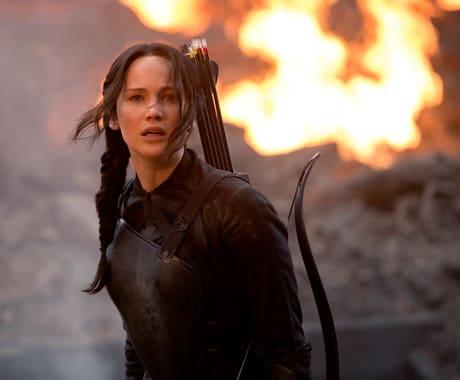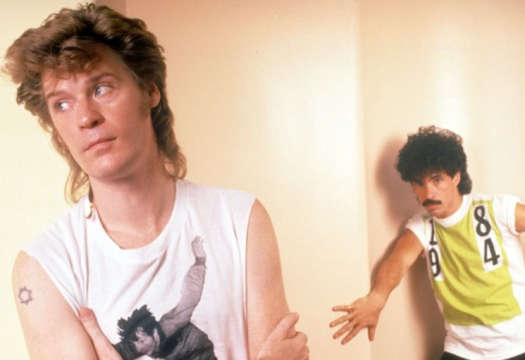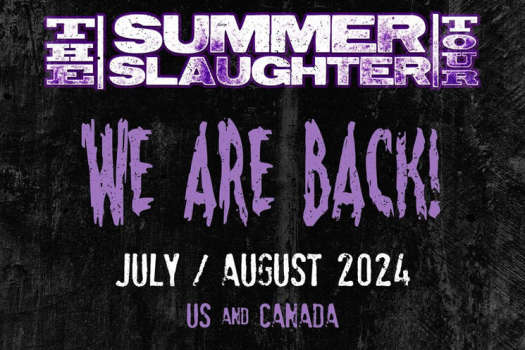Though successful due to its propulsive storytelling and accessible blend of twee teen romance with imminent mortal danger in the form of gladiatorial-style competitions — with magazine-pretty teenagers stepping in for large, hairy men — Susanne Collins' Hunger Games book trilogy has been legitimized by its dalliance with notions of reality and fabrication. How we respond to and engage media manipulation and how manufactured our perceived reality might be are just a few of the subjects lending these texts to an introductory "teen" analysis of political and media relations.
This third instalment, in addition to deviating from form — the first two books and films have basically the same framework and arcing — lends itself to the scrutiny of modern politics (something co-screenwriter Danny Strong (Recount, The Butler) is surely conscious of. Starting where the second film ended, Mockingjay opens with Katniss Everdeen (Jennifer Lawrence) being treated in a District 13 hospital after being rescued from the games. She's scarred, suffering from nightmares and acting out every cinematically clichéd visual stress indicator possible, while adapting to life in a maze of metal and concrete (an aesthetic that is nicely — and dramatically — juxtaposed with the open space of the Capitol). Here, she learns of her role as the face of the rebel uprising, a fabricated image to manipulate the actions of the masses (the Capitol was proven guilty of this in the first film).
Though there are obvious narrative nuances involving Katniss' relations with Gale (Liam Hemsworth) and her ambivalence towards President Alma Coin (Julianne Moore) — portraying ethical vacillation exceptionally — the preoccupation of this narrative is the gaze. Just as Peeta (Josh Hutcherson) has become a puppet for the Capitol, appearing onscreen to parrot propaganda, Katniss, despite being on board, is a glossy visual representation of the rebellion. Technology's key role is to facilitate the gaze while aiding rebels in disrupting the passive spectatorship created by their fascist oppressors to shake the foundations of those placated by a superficial culture.
The tie to present day world struggles isn't subtle. It's easy to see how the use of viral videos and technological engineering present in Mockingjay mirrors the way a certain extremist group has been known to exploit social media to send a message. Unfortunately, despite presenting some interesting binaries, the politics here are just as superficial as the plodding love triangle at the centre of the film. Very little is gleaned about the media apparatus, and the broad manner in which the rebellion is enacted doesn't say much about the complexities involved in manipulating a populace. Even more troubling is the rather irresponsible way that the plight of District 13 is tethered to a real-world metaphor that's far more complex and far less rationally motivated than the plucky teens depicted onscreen.
And though Mockingjay is an effective exercise in bland template filmmaking, having a tad more nuance than Catching Fire but adopting the same tendency to simply point and shoot without adding anything to the text, the format of presentation is ultimately problematic. Those that have already read Mockingjay know that the first half of the book is little more than a bunch of moping in a bunker with a bit of planning leading up to the final arc. Without the benefit of including that final arc here, this first film acts as a precursor to that narrative, and provides little dramatic ire. For that, viewers will have to wait for Part 2.
(eOne)This third instalment, in addition to deviating from form — the first two books and films have basically the same framework and arcing — lends itself to the scrutiny of modern politics (something co-screenwriter Danny Strong (Recount, The Butler) is surely conscious of. Starting where the second film ended, Mockingjay opens with Katniss Everdeen (Jennifer Lawrence) being treated in a District 13 hospital after being rescued from the games. She's scarred, suffering from nightmares and acting out every cinematically clichéd visual stress indicator possible, while adapting to life in a maze of metal and concrete (an aesthetic that is nicely — and dramatically — juxtaposed with the open space of the Capitol). Here, she learns of her role as the face of the rebel uprising, a fabricated image to manipulate the actions of the masses (the Capitol was proven guilty of this in the first film).
Though there are obvious narrative nuances involving Katniss' relations with Gale (Liam Hemsworth) and her ambivalence towards President Alma Coin (Julianne Moore) — portraying ethical vacillation exceptionally — the preoccupation of this narrative is the gaze. Just as Peeta (Josh Hutcherson) has become a puppet for the Capitol, appearing onscreen to parrot propaganda, Katniss, despite being on board, is a glossy visual representation of the rebellion. Technology's key role is to facilitate the gaze while aiding rebels in disrupting the passive spectatorship created by their fascist oppressors to shake the foundations of those placated by a superficial culture.
The tie to present day world struggles isn't subtle. It's easy to see how the use of viral videos and technological engineering present in Mockingjay mirrors the way a certain extremist group has been known to exploit social media to send a message. Unfortunately, despite presenting some interesting binaries, the politics here are just as superficial as the plodding love triangle at the centre of the film. Very little is gleaned about the media apparatus, and the broad manner in which the rebellion is enacted doesn't say much about the complexities involved in manipulating a populace. Even more troubling is the rather irresponsible way that the plight of District 13 is tethered to a real-world metaphor that's far more complex and far less rationally motivated than the plucky teens depicted onscreen.
And though Mockingjay is an effective exercise in bland template filmmaking, having a tad more nuance than Catching Fire but adopting the same tendency to simply point and shoot without adding anything to the text, the format of presentation is ultimately problematic. Those that have already read Mockingjay know that the first half of the book is little more than a bunch of moping in a bunker with a bit of planning leading up to the final arc. Without the benefit of including that final arc here, this first film acts as a precursor to that narrative, and provides little dramatic ire. For that, viewers will have to wait for Part 2.




